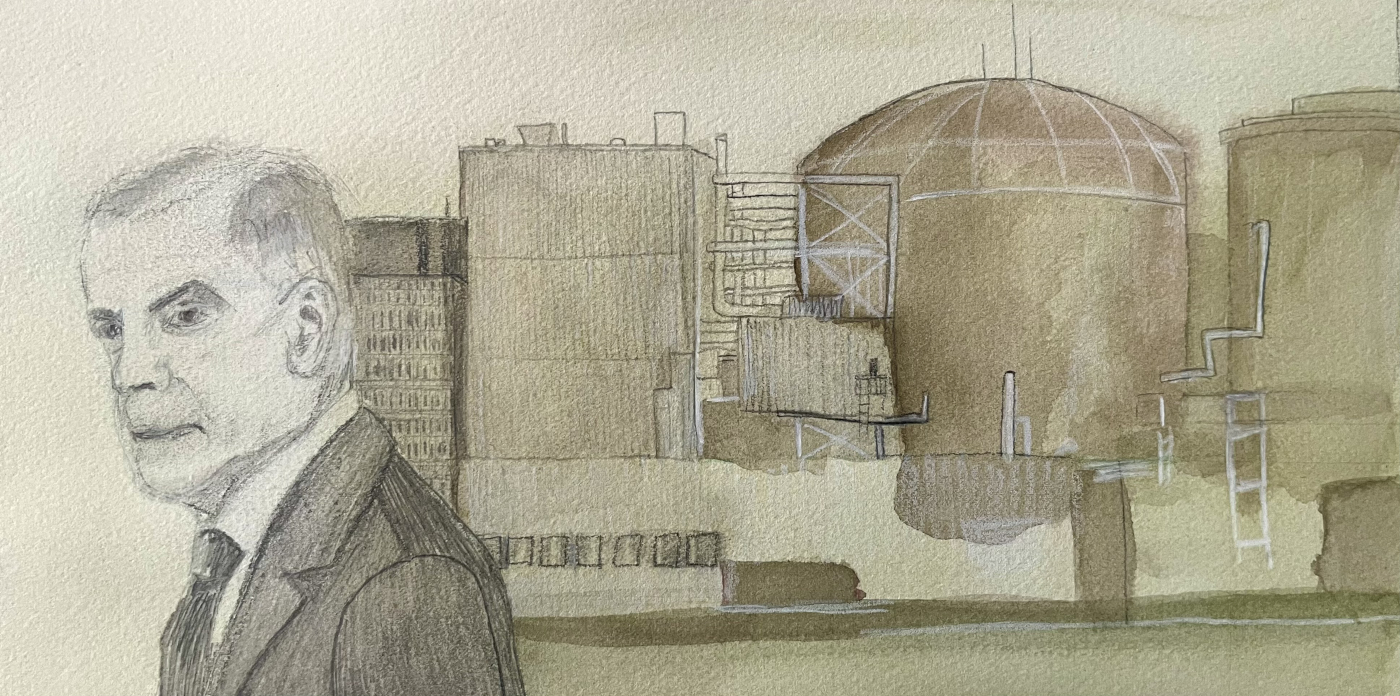@leveller_ottawa I really did wish we were investing into our own CANDU MONARK reactors. We would use raw Uranium from Sask, get Canadian engineering firms to build it, and not worry as much about waste.
Nuclear waste is way overblown as a concern. The total volume of waste is miniscule, relative to the power generated. Nuclear also uses almost no land for the reactor, compared with solar, and is essentially 100% dependable 24/7/365.
Solar is great, and costs are diminishing incredibly rapidly. And if the news of sodium-based batteries at ~9% the cost of lithium batteries plays out, then storing solar becomes cheap. Still not dependable for Canadian winters, of course. Solar also uses lots of land, and lots of mass of semiconductors (which of course has its own climate impacts to produce, ship, and recycle/dispose of).
I’m not super looped in to the technology specifics, but I understand that some modern nuclear designs are meltdown proof, too, so there isn’t really any rational NIMBY case to be made against them.
Having read the whole article, they don’t have any specifics that justify their concerns. They quote the price of nuclear facility construction, but don’t contrast those costs against any competing technologies, so the numbers are effectively meaningless. They complain about nuclear waste, but their only evidence is quoting NIMBYs who don’t want a facility put in close to them.
I’m open to being convinced that nuclear isn’t in Canada’s interests, but this article did not make a compelling case.
Arguably nuclear power has a lesser environmental impact than hydro despite its good reputation as a renewable.
Nuclear is just scary for the average person, even though the world has seen more dams breaking than nuclear reactor faults.
More people have died for the equivalent amount of power put out for every power creator than nuclear. Nuclear is by far the less dangerous than anything else, however when something goes wrong with nuclear it gets news because of the massive damage.
Still not dependable for Canadian winters, of course.
In a large, fixed installation, maintaining a constant temperature should be no problem. They might actually have to cool it.
Molten metal batteries are also a technology in consideration for that reason.
Even if the score is kept off, there’s the angle of the Sun and cloud cover. There’s just less sunlight to be had, even if the panels are kept clear of snow.
Hell, Vancouver Island gets practically no snow at all in many areas, and solar does much worse in its cloudy/rainy season (winter).
Yes, per area solar potential isn’t always high, so you do need more paneled land for the same thing. It still comes out cheaper at this point IIRC. On the prairies it’s actually comparatively great, solar-loving Germany is more like BC.
In the arctic you’d have to store it for a full season, so they’re probably going to stick with other things in the near future, but that’s a small share of the population and demand.
Meltdown proof
Is not possible, with new reactors it becomes very difficult but with the upgraded uranium it is a near zero but not zero.
Liquid fluoride thorium reactors are designed to be meltdown proof. A fusible plug at the bottom of the reactor melts in the event of a power failure or if temperatures exceed a set limit, draining the fuel into an underground tank for safe storage.
And, y’know, it’s actually melted from the start.
Like, you could say “accident proof” is impossible, but a meltdown is a very specific thing.
Nuclear is an important part of the mix for high energy density industrial activities especially. It’s importance is secondary to renewables.
What were missing here is the energy efficiency bit. Our building codes and transportation infra are weak and not fit for a low energy eroei metabolism that will be required post fossil fuels.
I just wish we went whole hog into wind and Solar. Nuclear is great but the push for it online makes me feel like that’s something going on.
It’s worth noting that Canada produces the majority of medical isotopes, enough so that there was a worldwide shortage when one of the CANDU reactors went offline for repairs a few years back. We could use more for that reason alone, but not that many more. As much as I like the idea of nuclear, I think it will be eclipsed by renewables, hydro, and cheaper battery storage. That said, in some parts of canada nuclear is the most reliable option.
Nuclear power is vital if we’re going to get rid of coal and gas. Nuclear provides adjustable (can be easily scaled up and down just by moving the control rods) base load power as well as grid forming (maintains steady 60Hz AC all the time).
Wind and solar do not supply base load power. Their power output varies with the sun or wind as well as the seasons. It’s important to note that power grids have zero storage capacity of their own. If there is excess power generation then power plants must be either dialled down or disconnected from the grid in order to prevent voltages from going too high (and damaging equipment).
On the other hand, if there’s not enough power then additional capacity must be brought online. Typically this is done with natural gas “peaker” plants (because natural gas is usually too expensive for base load power) but it can also be done (up to capacity) with nuclear plant control rods, albeit not quickly (in response to unexpected demand) so it’s generally used to vary power output throughout the day in order to match the expected supply and demand curve of the grid.
It’s been proposed that we build grid energy storage using batteries or pumped water for hydro but I don’t know of any realistic large scale proposals due to the large costs involved. Of course, grid energy storage won’t help if it’s already been charged to full capacity and there is still excess generation. It also doesn’t help if storage is depleted and there is insufficient production to meet demand.
The other issue I mentioned earlier is grid forming (maintaining steady 60Hz without any phase shifting). The advantage of big turbines (nuclear, coal, gas, hydro) is that they are large and very heavy spinning objects so they have tremendous momentum which means they don’t drift and can be maintained at a steady exact multiple of 60RPM (usually 1800RPM or 3600RPM) which makes it easy to produce stable 60Hz electrical output without undesired phase shifting.
Wind and solar cannot do this. These generators use electronics to produce DC power and then an inverter to convert DC to 60Hz AC. The challenge here is that the inverter output needs to be synchronized to the grid since out-of-phase power generation fights against the AC power already present on the grid.
But then what happens if the only generators on the grid are wind and solar with inverters? They all try to synchronize with each other and you get constant oscillating phase shifts! It creates total havoc on the grid. This aspect to power generation is very poorly understood and appreciated by the general public but it’s absolutely vital to avoid the problem.
It’s just power hungry AI data centers wanting people to subsidize their power costs. Nuclear reactors cost a fortune to build and run.
But they will last longer than any other green power generation, in the long term it is less expensive.
The ROI is definitely delayed, but the long-term output is worth the investment. When it comes to powering an entire city, nothing is more cost effective than nuclear.
Ugh no nuclear.
It’s far better than fossil fuels, especially with the newest generation of reactors.
I too like thought-provoking takes backed by real world data…




